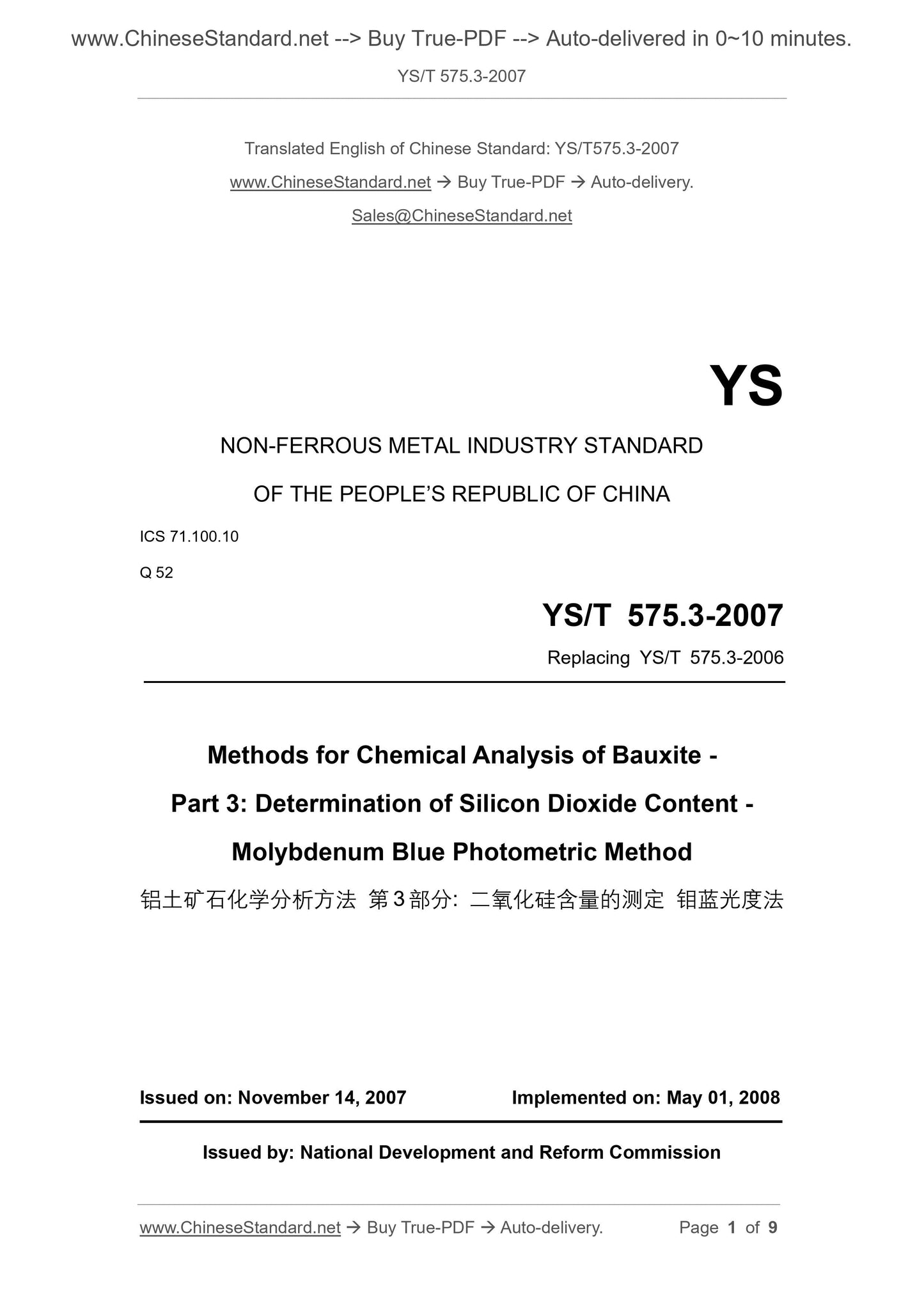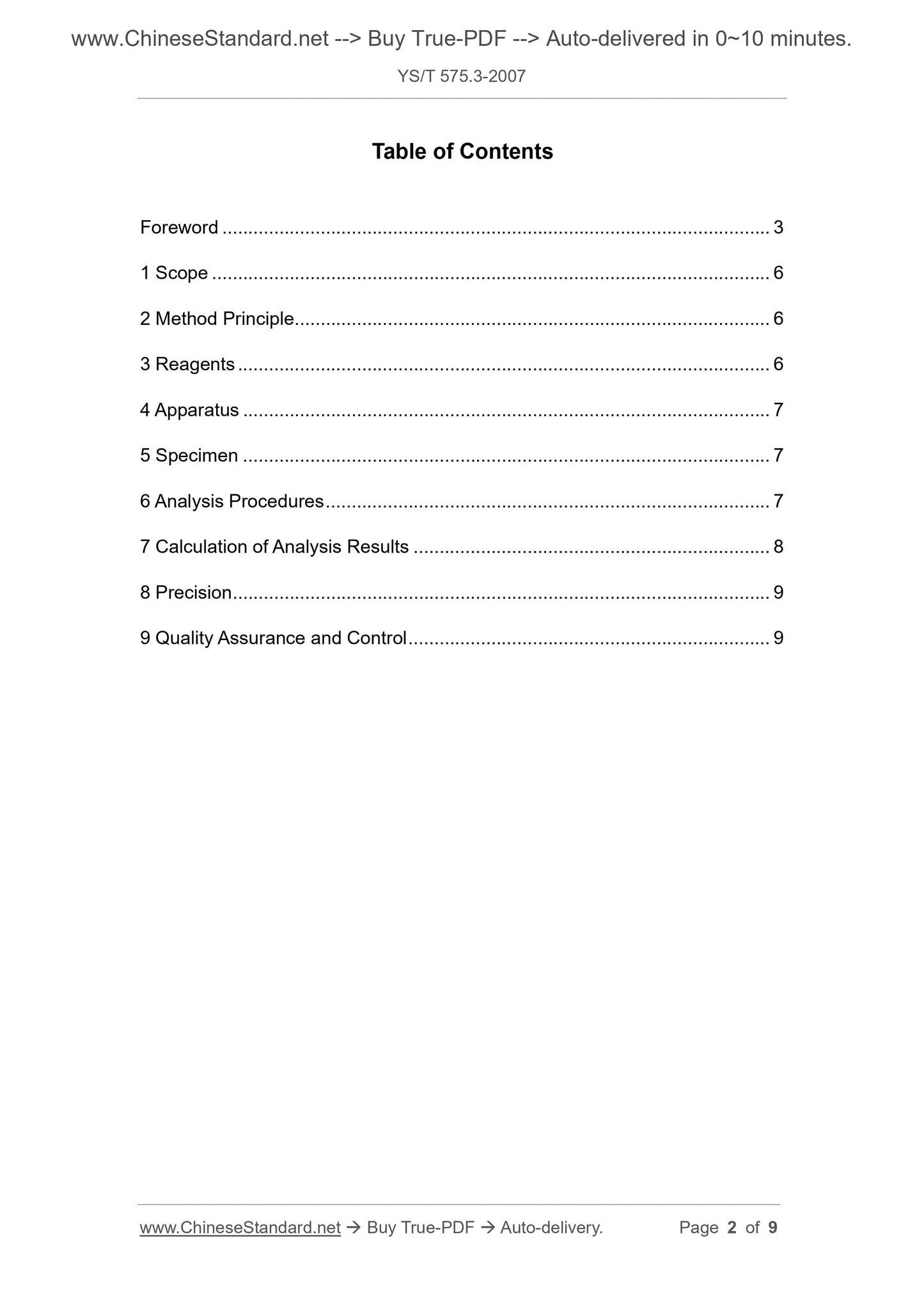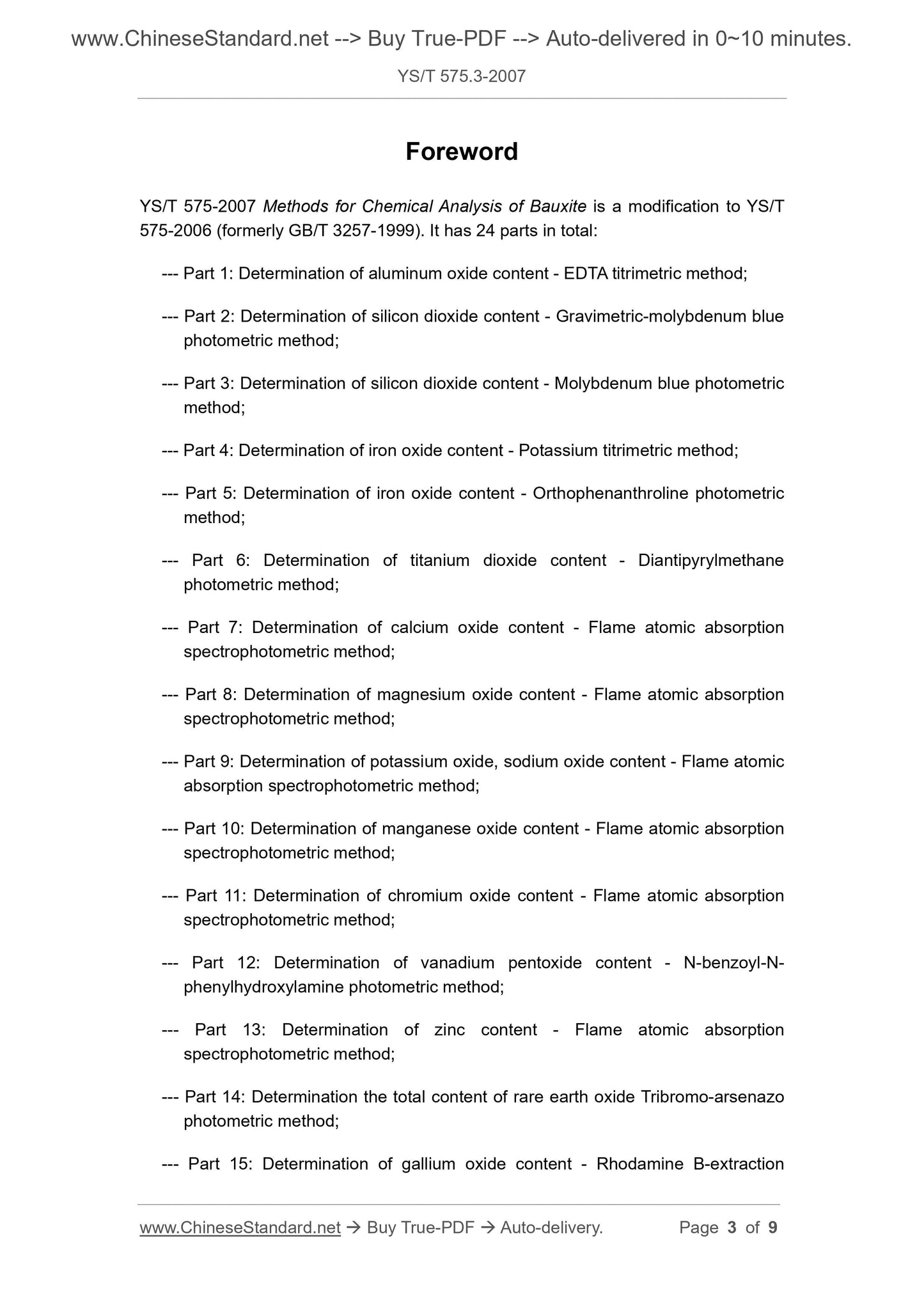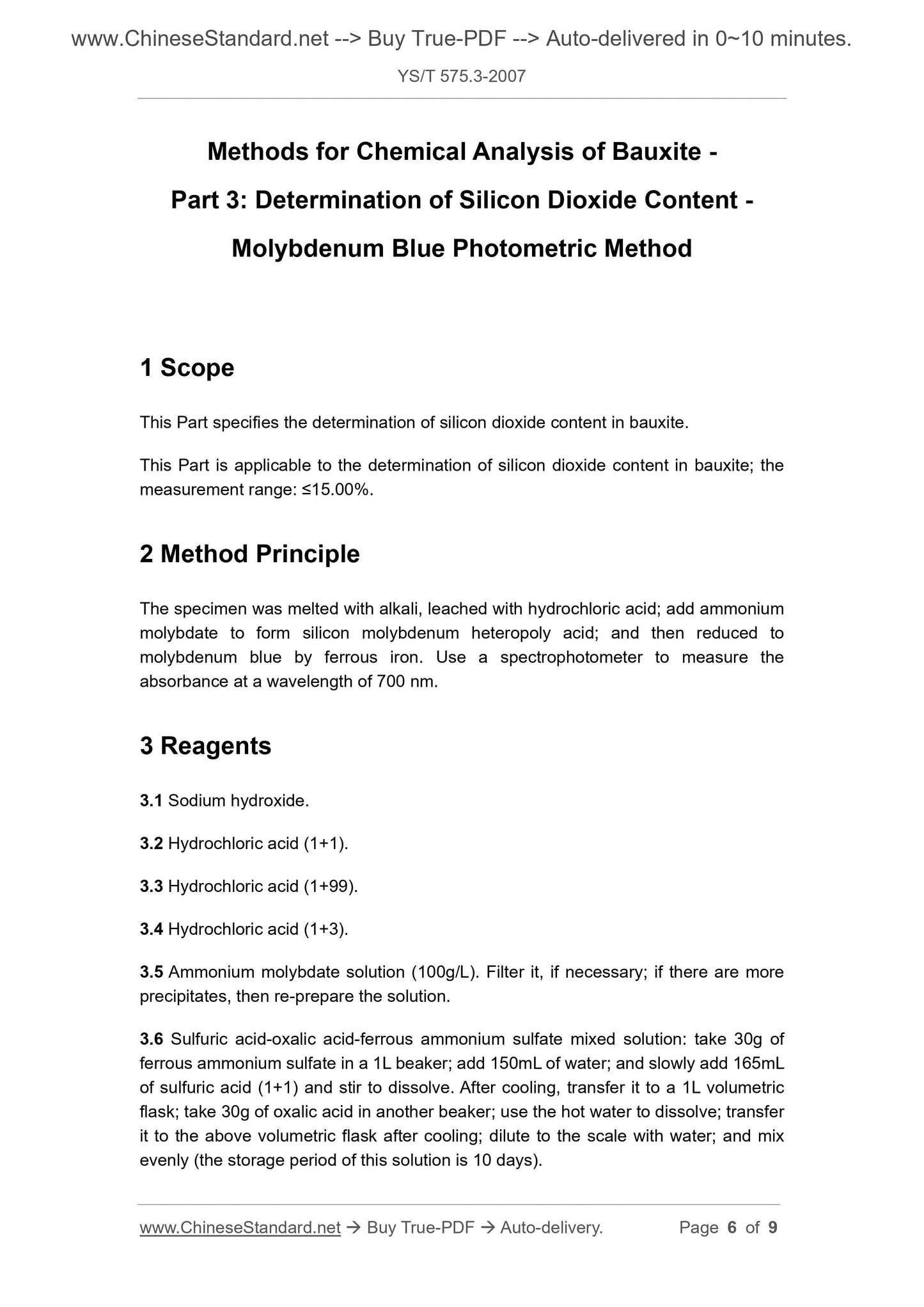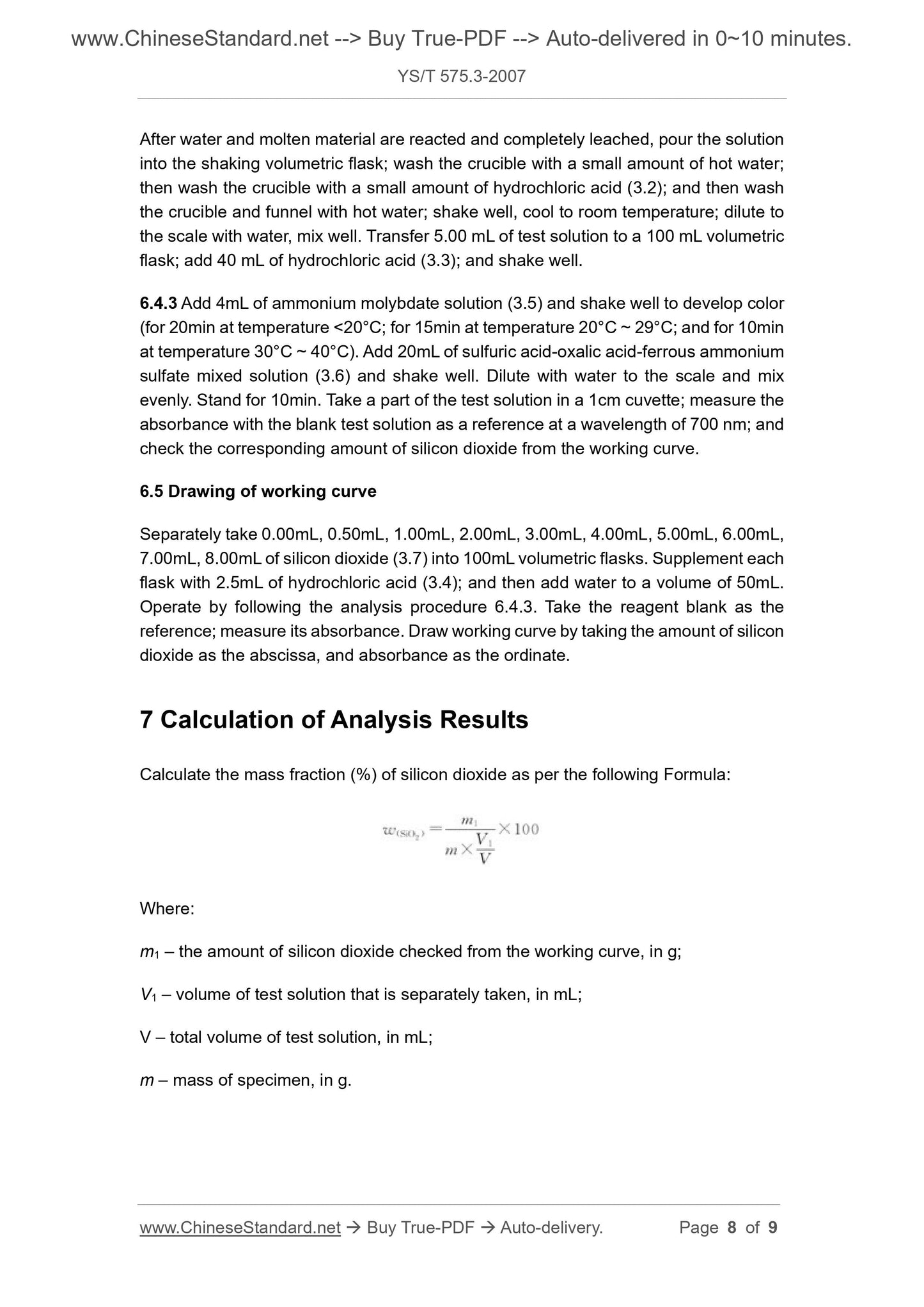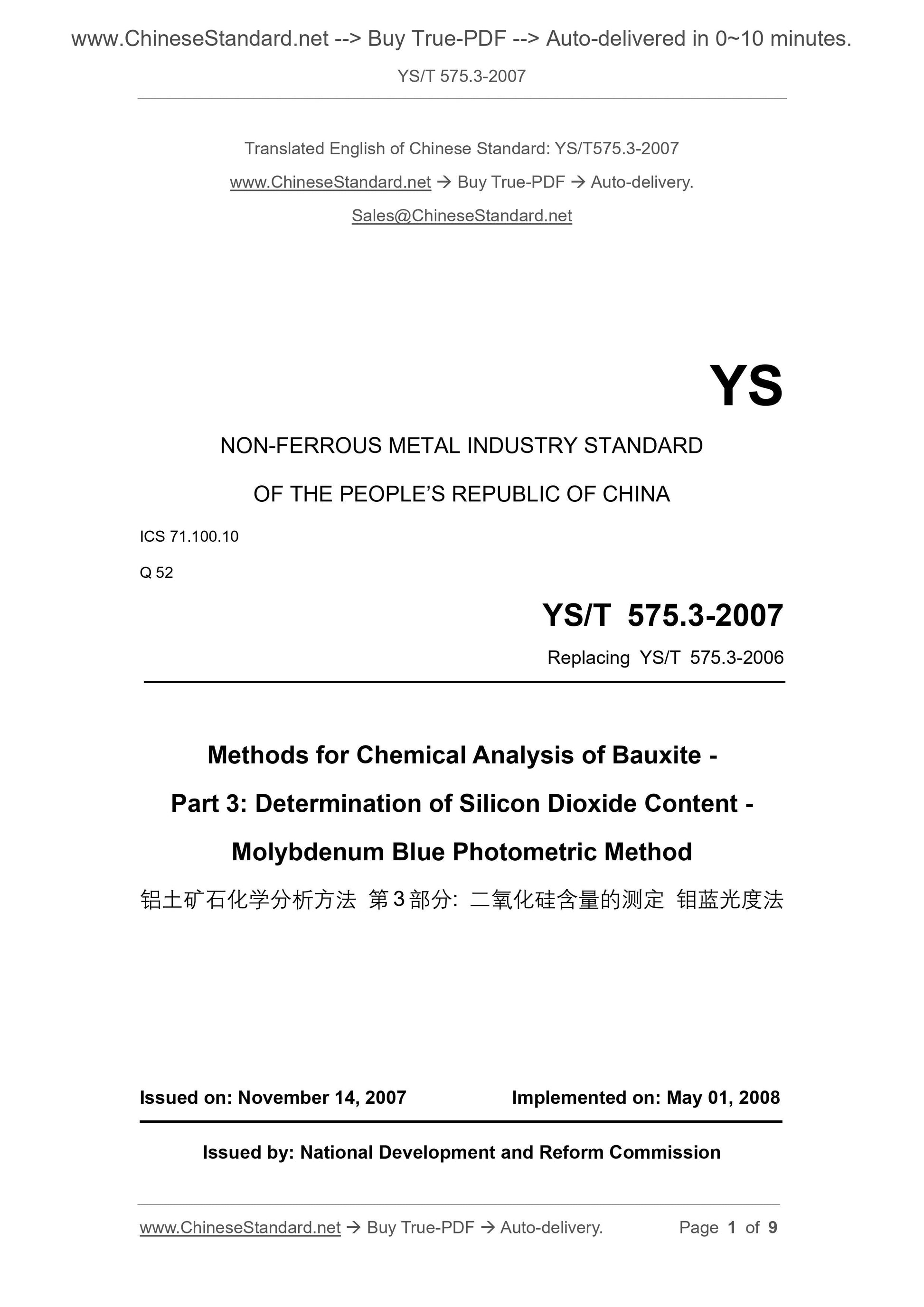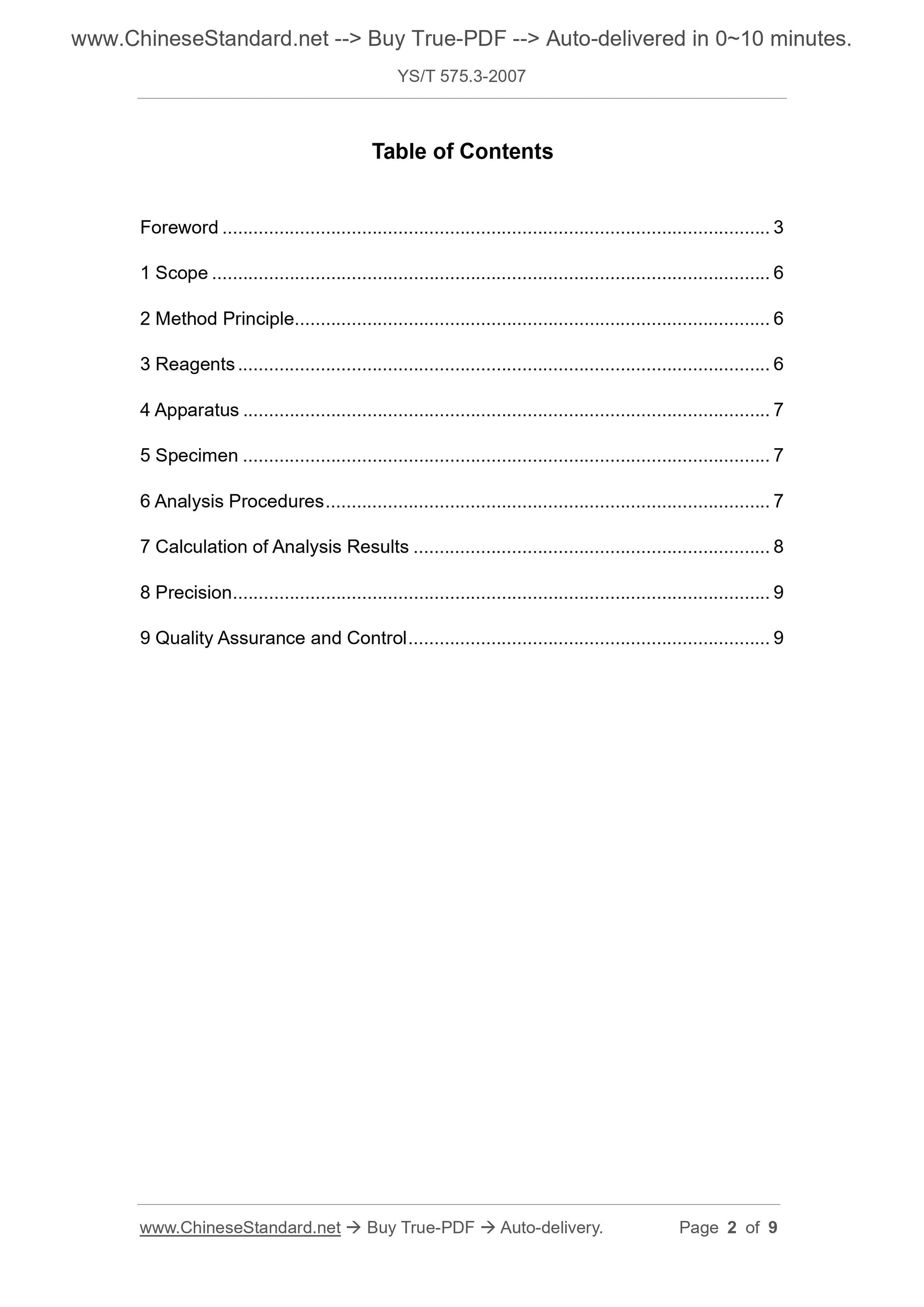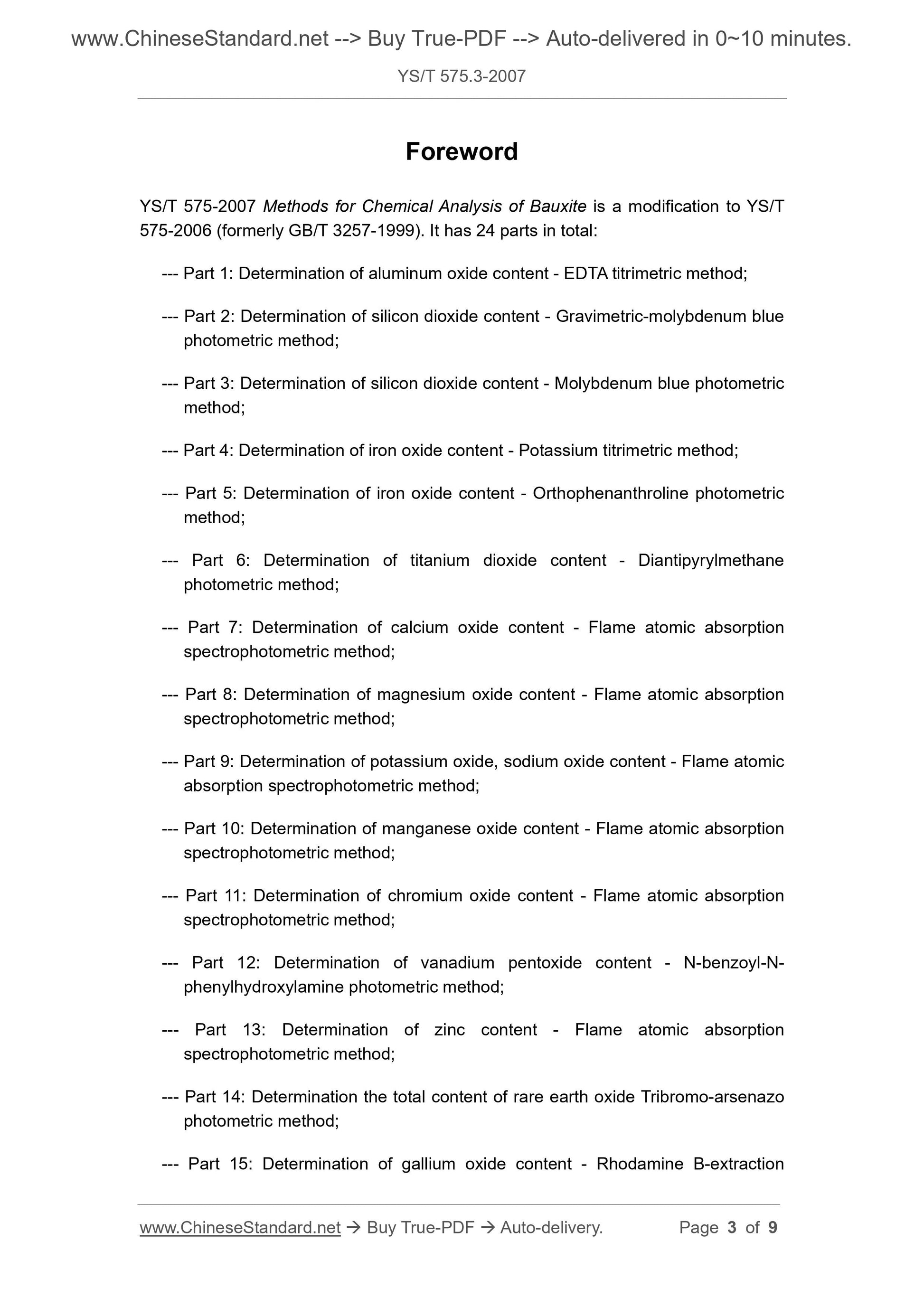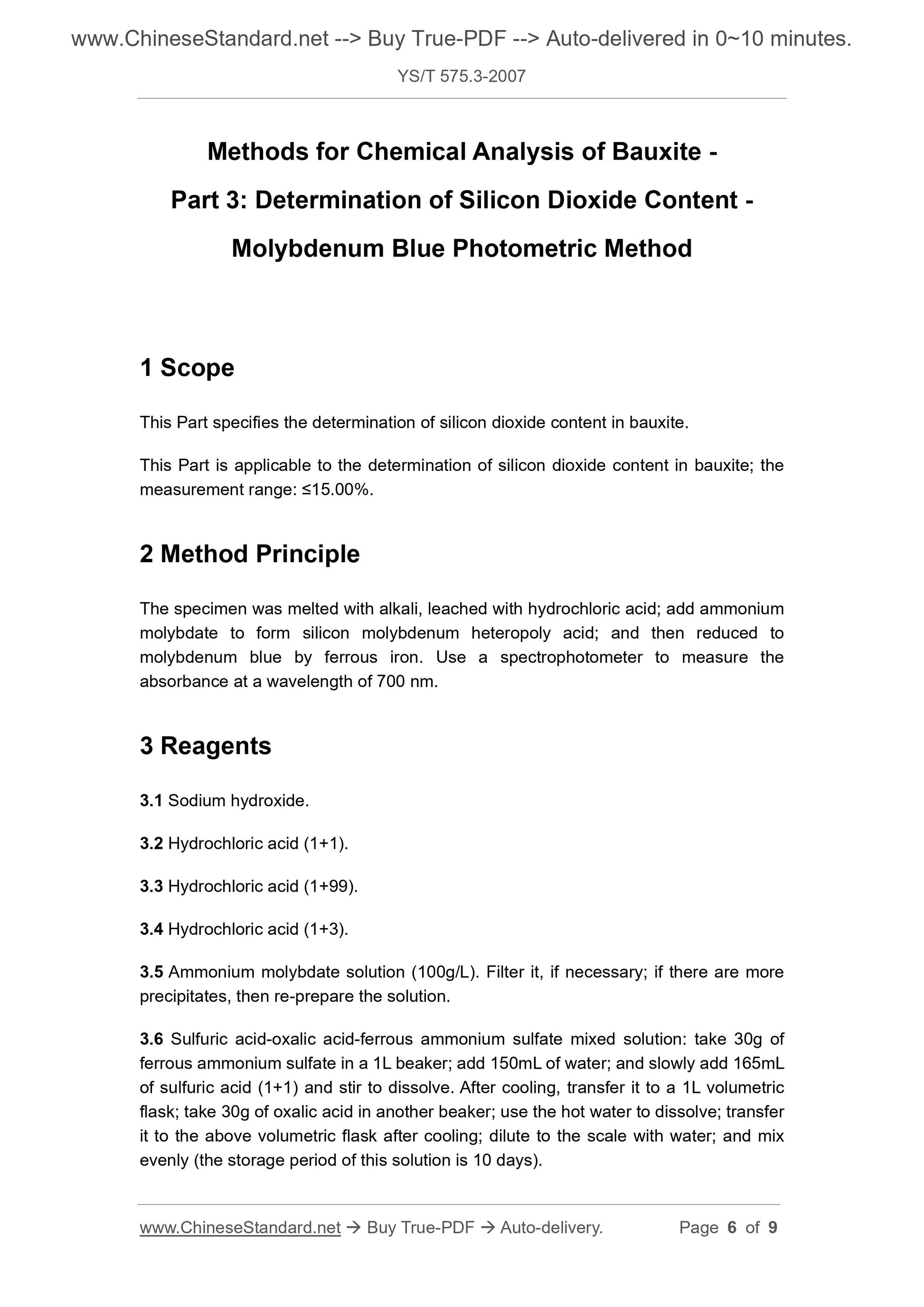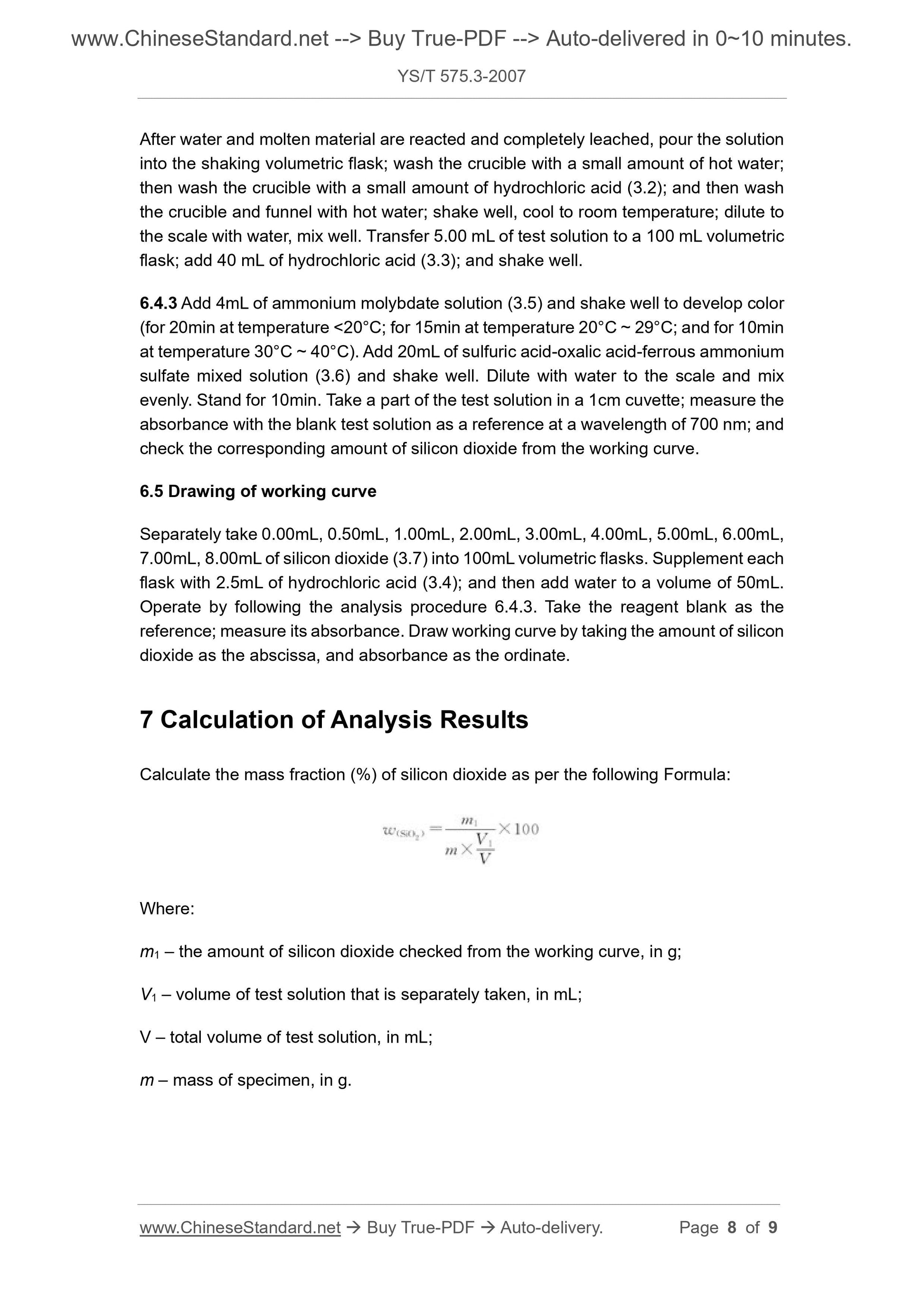1
/
of
5
www.ChineseStandard.us -- Field Test Asia Pte. Ltd.
YS/T 575.3-2007 English PDF (YS/T575.3-2007)
YS/T 575.3-2007 English PDF (YS/T575.3-2007)
Regular price
$100.00
Regular price
Sale price
$100.00
Unit price
/
per
Shipping calculated at checkout.
Couldn't load pickup availability
YS/T 575.3-2007: Methods for chemical analysis of bauxite. Part 3: Determination of silicon dioxide content. Molybdenum blue photometric method
Delivery: 9 seconds. Download (and Email) true-PDF + Invoice.Get Quotation: Click YS/T 575.3-2007 (Self-service in 1-minute)
Newer / historical versions: YS/T 575.3-2007
Preview True-PDF
Scope
This Part specifies the determination of silicon dioxide content in bauxite.This Part is applicable to the determination of silicon dioxide content in bauxite; the
measurement range: ≤15.00%.
Basic Data
| Standard ID | YS/T 575.3-2007 (YS/T575.3-2007) |
| Description (Translated English) | Methods for chemical analysis of bauxite. Part 3: Determination of silicon dioxide content. Molybdenum blue photometric method |
| Sector / Industry | Nonferrous Metallurgy Industry Standard (Recommended) |
| Classification of Chinese Standard | Q52;D42 |
| Classification of International Standard | 71.100.10 |
| Word Count Estimation | 7,761 |
| Date of Issue | 2007-11-14 |
| Date of Implementation | 2008-05-01 |
| Older Standard (superseded by this standard) | YS/T 575.3-2006 |
| Regulation (derived from) | NDRC Notice No. 77 of 2007 |
| Issuing agency(ies) | National Development and Reform Commission |
| Summary | This standard specifies the content of silica bauxite method. This standard applies to silica bauxite in the determination of measurement range: �� 15. 00%. |
Share
